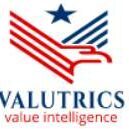We’re Entering a New Era of Augmented Analytics – Valutrics
The next fundamental shift in the evolution of analytics is beginning. Similar to the second wave of self-service business intelligence disrupting the first wave of traditional BI, augmented analytics technologies in the third wave will change the game once again. Early adopters of augmented analytics tout unprecedented speed to insight and enhanced competitive advantage.
Business intelligence plus artificial intelligence
Augmented analytics uses machine-learning automation to supplement human intelligence across the entire analytics life-cycle. Last week Gartner released a report called “Augmented Analytics is the Future of Data and Analytics”. If you are not a Gartner subscriber, Rita Sallam’s public article provides an brief overview.
Automating analytics is not a novel idea. This old concept is vastly improving thanks to advances in artificial intelligence, search, natural language, and other modern computing technologies. Numerous vendors already suggest data visualizations, reveal outliers, embed simple forecasting and clustering within visual analytics tools. Augmented analytics delves deeper.
Next generation augmented analytics capabilities can automatically prepare and cleanse data, perform feature engineering, find key insights and hidden patterns. Automation expedites investigation across millions of variable combinations that would be too time consuming for a human to do manually. Often new discoveries are exposed in the process. Furthermore, artificial intelligence algorithms interpret results and present unbiased alternatives along with actionable recommendations.
Compelling reasons to pilot
Gartner estimates that augmented analytics will grow at twice the rate of those that are not, and will deliver twice the business value. Analytics and BI leaders should begin planning for augmented analytics pilot projects and adoption. Notably, augmented analytics complements rather than replaces existing enterprise BI, self-service BI and data science platforms. Augmented analytics can also be embedded into line of business applications to improve decision-making processes.
As the saying goes, seeing is believing. Analytics automation might initially be resisted out of fear and reasonable skepticism. To understand augmented analytics’ potential, try these solutions with your own data. Validate identified insights and review recommended alternatives. The evaluation exercise should provide rapid value while concurrently educating and enlightening your team.
I personally found augmented and automated analytics offerings to be easy to use and truly beneficial for my clients. These solutions are ideal for common use cases such as prioritizing leads, detecting customer churn, performing win/loss analysis, predicting readmissions in healthcare or identifying insurance fraud. Simply exploring a new data set was also immensely helpful.
Beware of garbage in, garbage out
As the “augmented” label implies, augmented analytics solutions do not replace human talent. The true beauty of automating analytics is seen when combining the human mind with the power of intelligent machine learning.
Augmented analytics applications deliver amazing results in the right hands with unbiased, properly prepared data. Since automated analytics relies on statistical techniques, inaccurate, biased or poor quality data that doesn’t sufficiently represent business processes will deliver low quality results. Think garbage in, garbage out. There is an art to preparing data for automated analysis.
Bias is another hot topic when it comes to algorithmic decision-making. Industry leaders are exploring bias challenges, conscious and unconscious, and providing guidelines to minimize the potential for unintended harm. Regardless of automation, bias occurs today in manual processes from data collection to recommended actions. Personal, political and other motives often skew analysis.
Where to start
In exploring how augmented analytics can be used within your organization, consider what initiatives could benefit the most from automation to ease or expedite complex manual analysis. If feasible, pilot these solutions side-[Read more from Jen Underwood in What Analytics Pros Need to Know About GDPR.]
